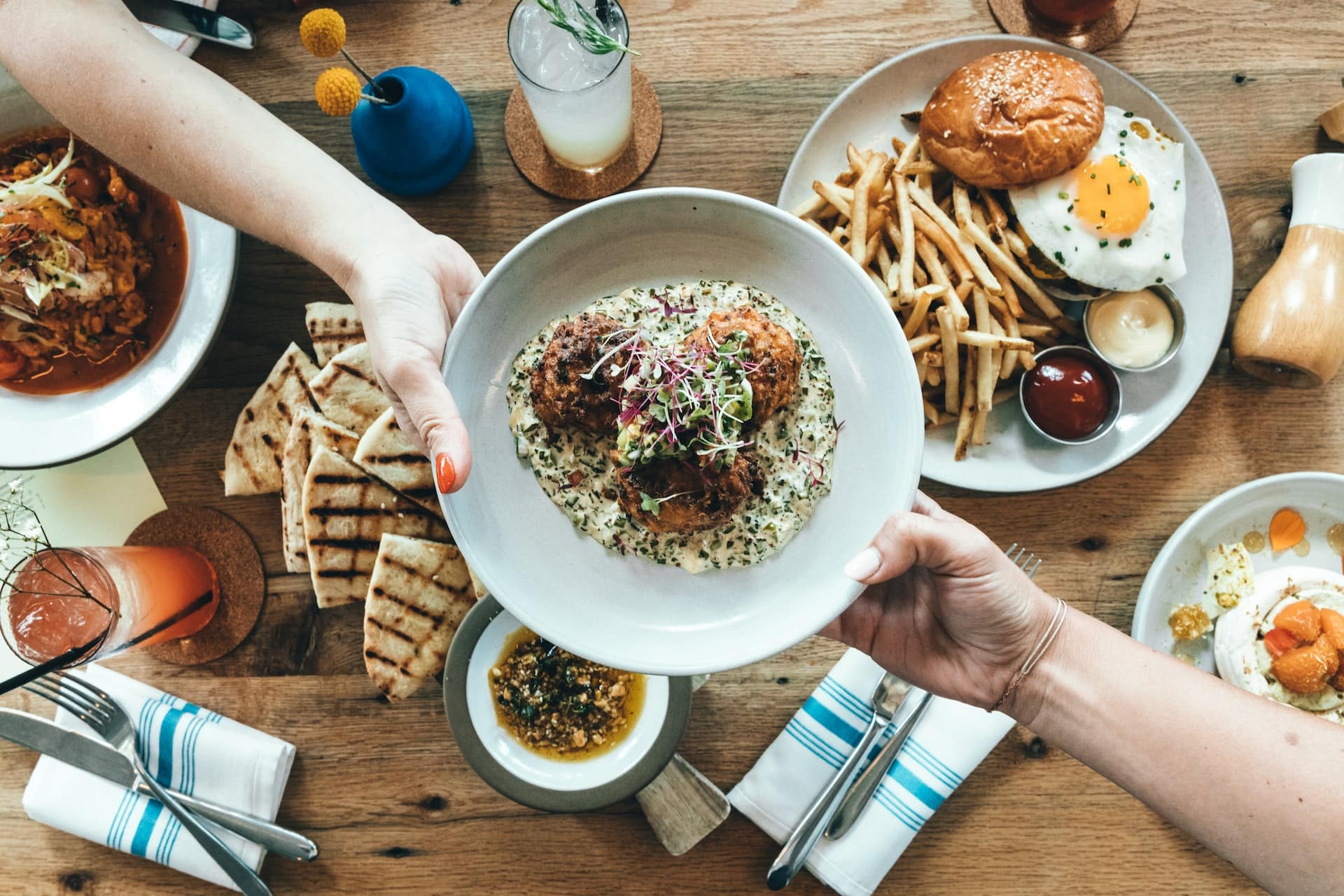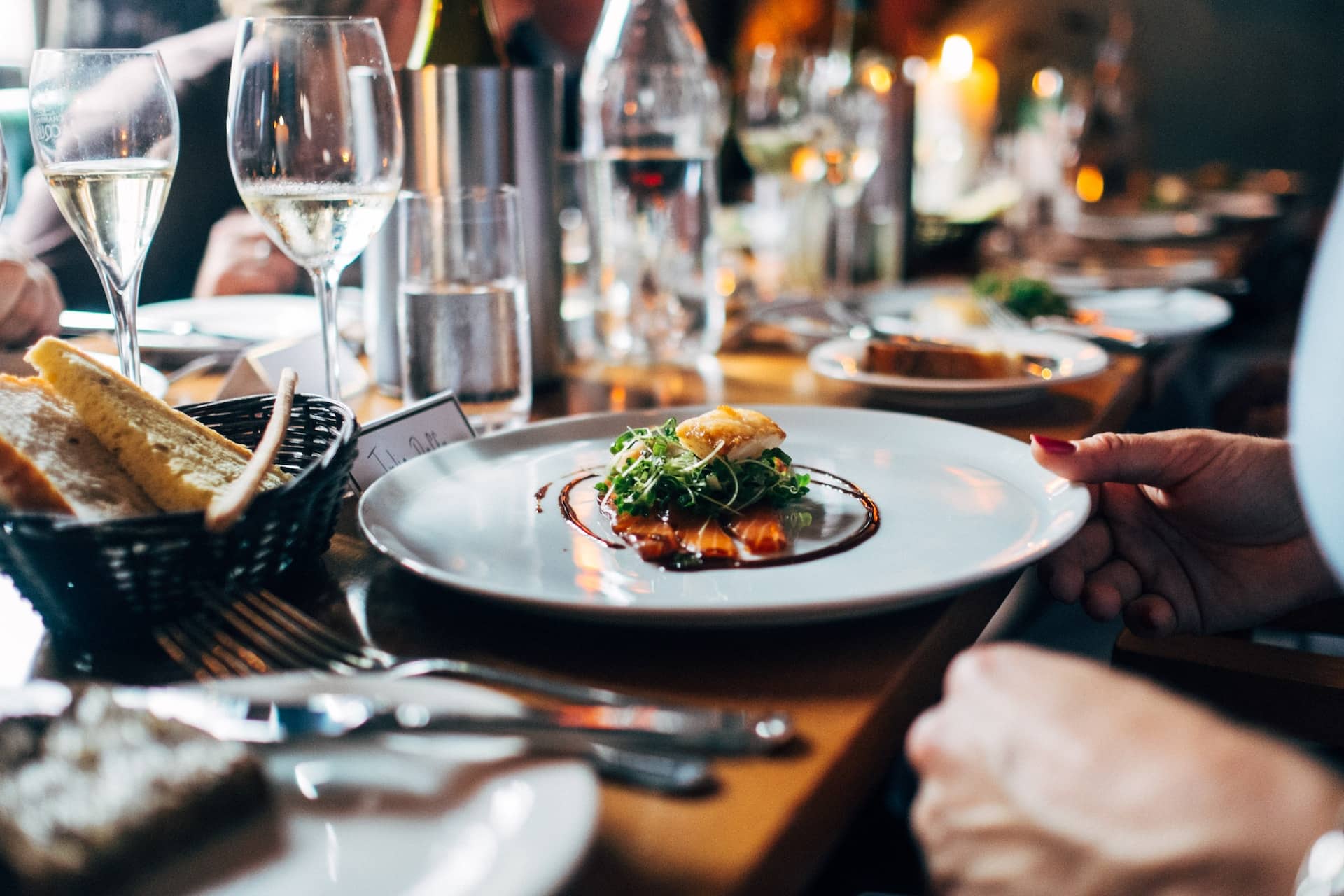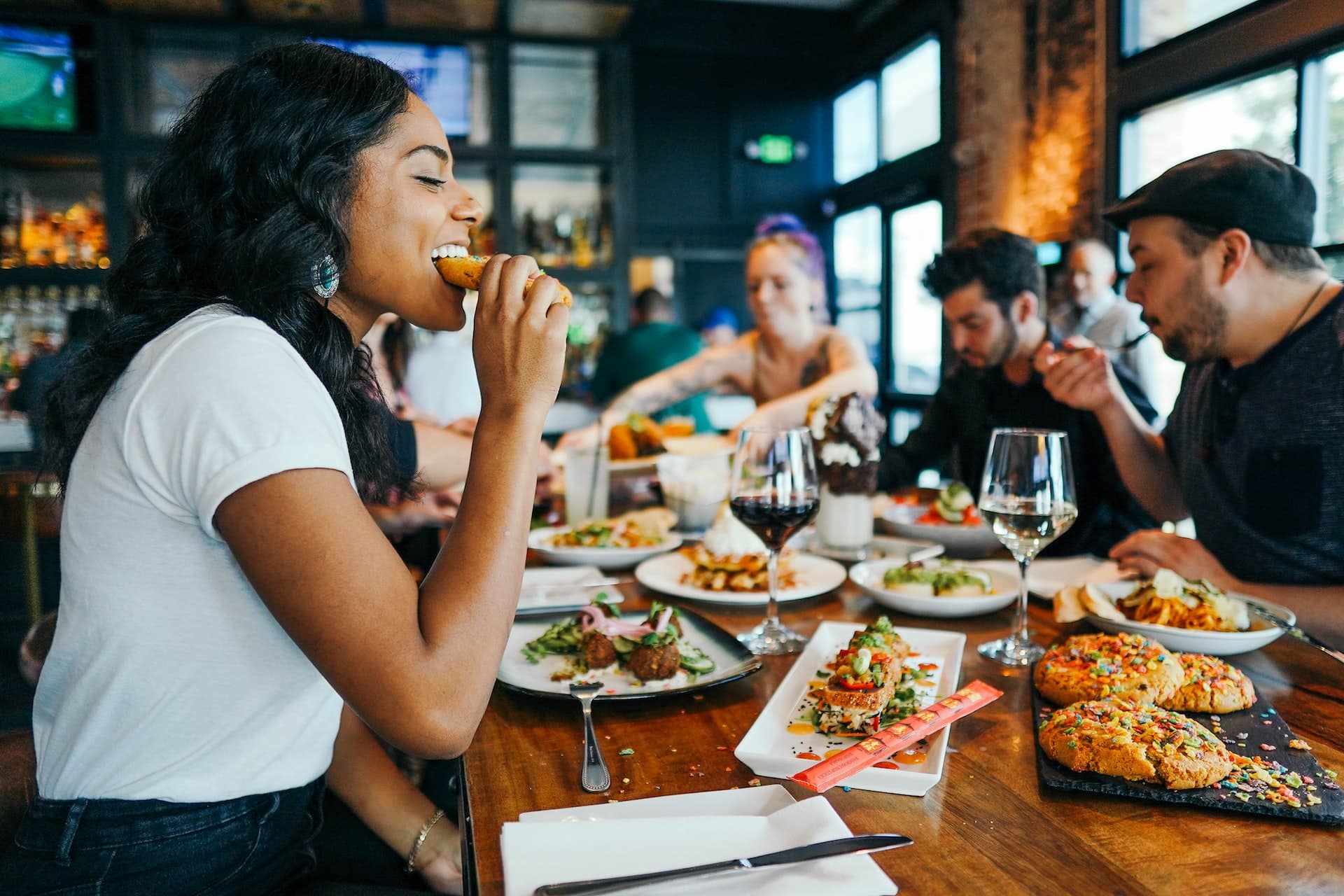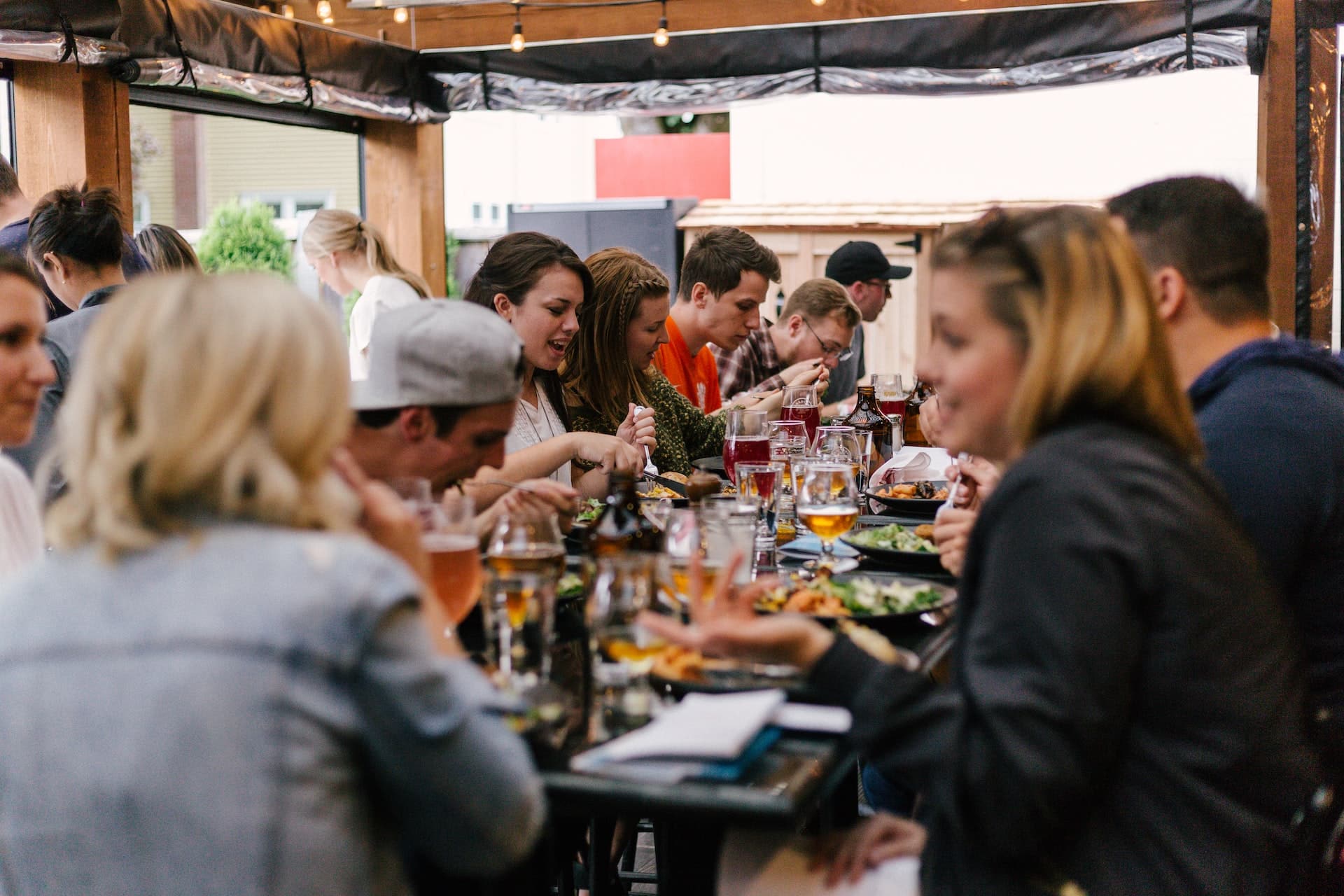Today's article will be a treat for foodies since it will be all about food and beverages. The food and beverage industry is one of the biggest industries since it has a broad customer base.
Have you ever seen a person who doesn't eat or drink? Of course not. Hence, all humans are affiliated with the food and beverage industry. However, some of you might not be aware of what exactly comes under the banner of the food and beverage industry. Well, let me tell you.
The food and beverage industry consists of all places where food and beverages are served, such as cafes, restaurants, pubs, etc. Besides the direct outlets that provide food and beverages, food and beverages manufacturers and transporters are also considered a part of the food and beverage industry.
Since the food and beverage industry is one of the biggest industries, we have decided to conduct a Food and Beverage Industry Analysis in today's article.

The food and beverage industry is the oldest. So, you must be thinking, how am I making such a big claim?
To understand this, you have to understand that even at the time of cavemen, no other industry existed. Even then, humans were consuming food. Hence, the food and beverage industry existed.
Over the years, the food and beverage industry evolved. The practice of agriculture started when people started to plant crops and fruits to meet consumers' demands. Later as industrialization occurred, manufacturing industries got established that manufactured and packaged different eating and drinking products.
The food industry is divided into different segments. Some of the food and beverage industry's most important components are producers, manufacturers, retailers, and consumers. All these segments join together to form the food and beverage industry.
Producers are the farmers who grow food, while manufacturers are the industries that manufacture new products from raw inputs and are involved in packaging. Moreover, retailers are the grocery stores and supermarkets that make the food and beverages available to consumers.
The last and most important segment of the food and beverage industry is the consumers, who control the demand in the industry. Besides these key components of the food and beverage industry, transporters and marketing people involved in the operations related to the food and beverage industry are also a part of the industry.
The food and beverage industry is an ever-growing industry. In 2022, the food and beverage industry grew to $6.3 trillion at 8.7%. As the industry is growing, more food outlets have been established worldwide. Currently, around 15 million cafes, restaurants, and pubs all over the globe contribute significantly to the industry's growth.
Since this industry is huge, it provides employment to around 22 million workers. Besides that, it supports many industries, such as agriculture, with whom around 1 billion people are associated.
Since the food and beverage industry is responsible for generating economic activity, providing food, and creating jobs.
Let's proceed further and conduct a food and beverage industry analysis to see the food and beverage industry's life cycle, the industry's competitiveness, and what external and internal factors impact the industry's operations.

Food and Beverage Industry Life Cycle
As we proceed further with the industry analysis, let's first construct the food and beverage industry life cycle. The life cycle of every industry is divided into five parts.
The first part of every industry life cycle is the startup stage. After that, an industry reaches the growth stage. Then, the industry has to undergo the shakeout stage, and it reaches the maturity stage. In the end, every industry reaches the decline stage.
Startup Stage
The startup stage is the opening stage of the industry life cycle. This stage represents the initial days of an industry when there are very few businesses that operate in the industry. Since not many companies are a part of the industry at that time. Hence, less competition exists within the industry.
Since the industry is in its initial days, people are unaware of the industry. Companies that are a part of the industry look for ways to attract customers. The food and beverage industry has been around ever since the existence of humans.
However, it is said that the first restaurant ever established was in 1765. Therefore, this era can be considered the startup stage of the food and beverage industry since no or very few restaurants would have existed back then.
Growth Stage
After the startup stage, every industry undergoes the growth stage. In this stage, the industry starts to grow. More companies start to enter the industry, and the industry's competition increases. This stage benefits the consumers since they have many more options.
The food and beverage industry entered the growth stage in the 19th century when canning and pasteurization developed. These processes made it possible to store and package food for later use. After that, manufacturing and packaging took place in the food and beverage industry.
Moreover, this enabled more food and beverage-related businesses to establish. Hence the food and beverage industry grew.
Shakeout Stage
As an industry crosses the growth stage, it enters the shakeout stage. In this stage, small companies exit the industry since they find it difficult to survive in a highly competitive market. As a result, some well-established companies that hold large market shares emerged.
Besides, these large companies acquire smaller companies or force them to leave the industry.
The shakeout stage in the food and beverage industry arrived in the 20th century when big brands in the food and beverage industry, such as Nestle and Pepsi, arrived and established themselves. These brands acquired smaller companies and survived in the industry.
Maturity Stage
This stage reflects when the industry stops growing further, as it has no further potential to grow. In the maturity stage, the industry is at its peak since it maximizes its market share.
The food and beverage industry hasn't reached the maturity stage yet. However, as the population keeps on growing, the demand for the food and beverage industry continues to grow. As a result, the industry is predicted to grow at 8.7% in the coming years.
Decline Stage
The decline stage arrives after the maturity stage. In this stage, the industry's market share starts to fall since the demand for the products offered falls. This usually happens when consumers switch to an alternative industry.
The food and beverage industry is far from the decline stage since there are no signs of the decline of the food and beverage industry. Furthermore, humans have no alternative to food, so the industry won't be entering the decline stage anytime soon.

Assessing the Competition: Porter's Five Forces Model
Now that we are done discussing the life cycle of the food and beverage industry let's proceed further and have a look at the level of competition that exists in the food and beverage industry through Porter's five forces model.
Porter's five forces model is a business tool companies use to assess the level of competition in an industry. Companies decide whether to enter an industry or not with the help of this technique.
This model consists of five stages. Let's move ahead and analyze how competitive the food and beverage industry is.
Competitive Rivalry
This factor of Porter's five forces model analyses the competition in the industry. It is the first factor of the model.
The food and beverage industry is highly competitive. There are several brands present in the industry that want to maximize their share. Since many companies are present, there are price wars, and brands spend significantly on R&D to gain a competitive advantage over other brands.
Supplier Power
In every market there, either buyers or suppliers have the power. This factor analyses the supplier's power to dictate prices in an industry. Any industry where the number of suppliers is low will have great supplier power. At the same time, an industry where there are a lot of suppliers will have low supplier power.
The supplier power in the food and beverage industry is quite low since many suppliers are available in the market. Hence, there is always an option to switch suppliers. Moreover, the input supplied isn't something scarce. Almost every supplier supplies similar products, which decreases the supplier's power.
Buyer Power
This factor of Porter's five forces model analyses the power of buyers to dictate the prices. Buyers can exercise their power if there are several alternatives present for the buyers.
The buying power in the food and beverage industry is really high since buyers can switch to different brands because of low switching costs. Moreover, buyers are highly price-sensitive, which is why the food and beverage industry brands have to agree with the prices set by buyers.
Threat of Substitution
This factor discusses how threatened companies are from getting substituted by customers. The companies in the food and beverage industries face a great threat of substitution since many companies offer similar products.
For example, many companies manufacture milk, all of which taste the same. In such cases, customers can easily substitute one brand with another.
Threats of New Entry
This model factor investigates how threatened the existing companies are by new entrants. The threat of new entrants in the food and beverage industry is relatively low since several barriers exist for new entrants.
Many companies already exist in the industry that won't let a new entrant snatch its market share. Moreover, it takes time for a new entrant to realize the market trends, so it's impossible for a new company to compete with the industry giants.

Environmental Analysis
After constructing the industry life cycle and assessing the competition in the food and beverage industry, let's conduct an environmental analysis of the food and beverage industry.
To conduct the environmental analysis, we will conduct the SWOT and the PESTLE analysis of the food and beverage industry.
PESTLE Analysis
PESTLE analysis is a business technique used to analyze the external factors that impact an organization's operations. Let's identify some external factors impacting the food and beverage industry.
● Political Factors
Governments worldwide have different laws regarding the food and beverage industry. Some countries have strict checks and balances, while others have relatively relaxed laws. Therefore, businesses in the food and beverage industry operating in countries with strict laws must be careful.
● Economic Factors
Recessions always lower the purchasing power of the customers. A global recession is predicted soon, which will reduce the purchasing power of the people. Hence, the food and beverage industry will suffer.
● Social Factors
As awareness has increased, people have realized how bad fast food is for their bodies. As a result, many people have stopped eating fast food. This has caused the demand for fast food to decrease.
● Technological Factors
Technological developments have made the internet available to the masses, and businesses have started to market their products on social media. Companies in the food and beverage industry are doing the same. As a result, the demand for food and beverage products has increased significantly.
● Legal Factors
The food and beverage industry requires a lot of labor. Hence, companies have to ensure that they don't violate any labor laws or that they can face penalties that will adversely affect the entire industry.
● Environmental Factors
The food and beverage industry uses a lot of plastic packaging. Plastic deteriorates the environment. The food and beverage industry has to find an alternative to plastic to mitigate its contribution to disposing of plastic.

SWOT Analysis
The SWOT analysis is used by business analysts to analyze the internal and external factors affecting an organization's operations. So let's proceed further and conduct the food and beverage industry SWOT analysis.
● Strengths
The food and beverage industry has a huge customer base since every human is a consumer, and some are producers. As a result, the food and beverage industry generates high revenue.
● Weaknesses
A lot of food is wasted by the food and beverage industry. According to the UN's report, after harvesting, 13.3% of food is wasted, and consumers waste 17% of the total food.
● Opportunities
Every human consumes food. Hence, the increasing population acts as an opportunity for the food and beverage industry as it will increase the demand for the products offered by the companies in the industry.
● Threats
The war between Russia and Ukraine has adversely impacted the industry since several companies in the food and beverage industry have suspended their operations in Russia. The industry will observe financial losses till the war doesn't stop.

Food and Beverage Industry Analysis: Final Word
The food and beverage industry is the oldest and most significant industry. Besides providing food, it generates economic activity and jobs for millions of people.
Since the food and beverage industry holds great significance, we have conducted its industry analysis today. To recap, we first conducted the industry life cycle to analyze different stages of the food and beverage industry.
Then we assessed the industry competition level with the help of Porter's Five Forces Model. After that, we carried out an environmental analysis of the food and beverage industry. In the environmental analysis, we carried out both PESTLE and SWOT analysis of the food and beverage industry. After completing our industry analysis, we assume that this article has made you fully aware of the food and beverage industry.










